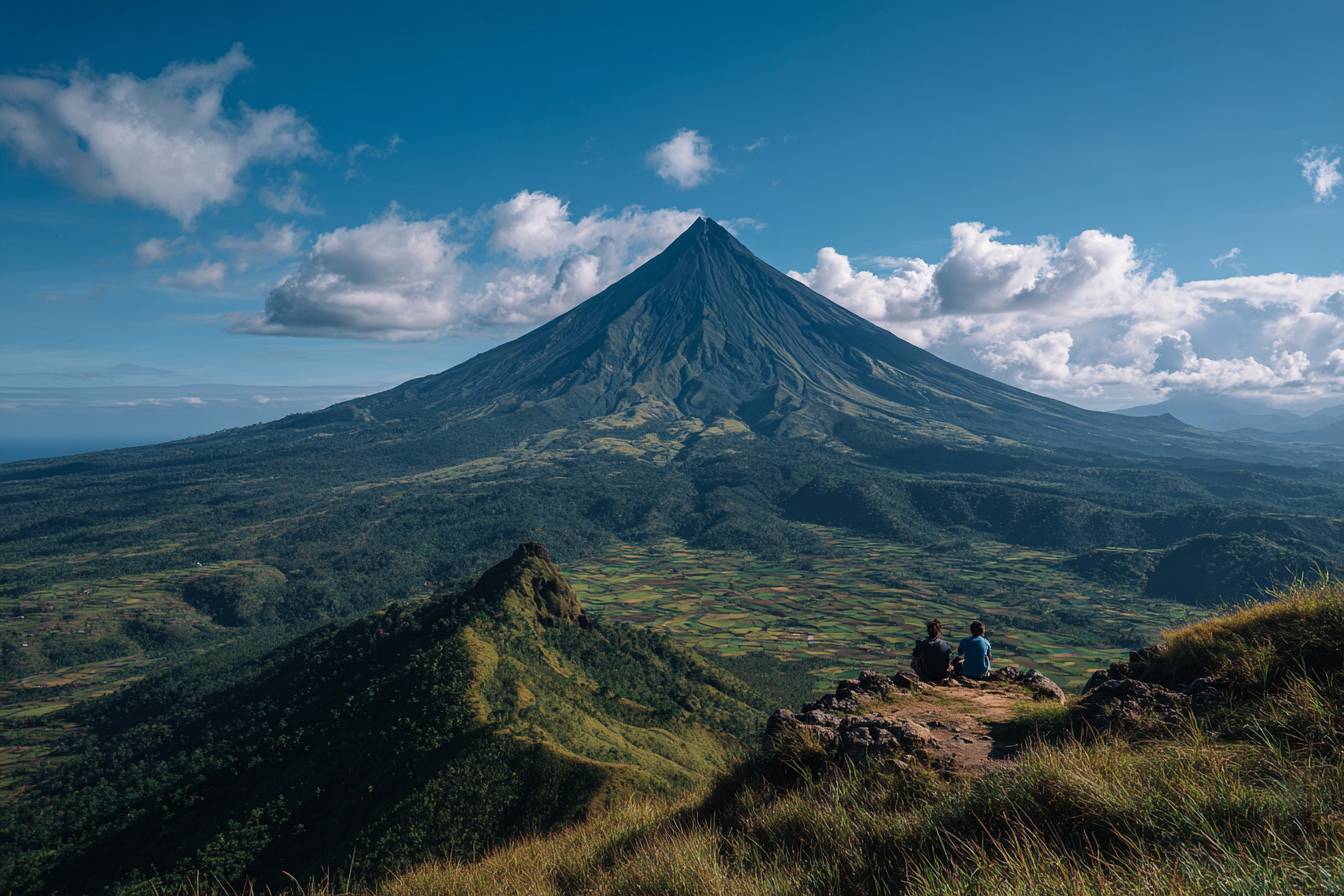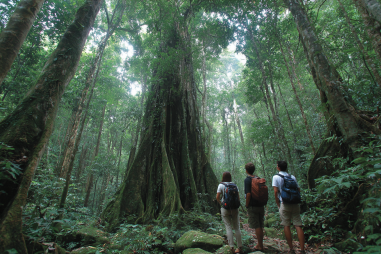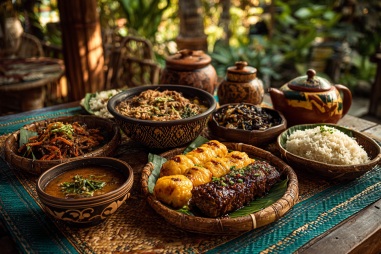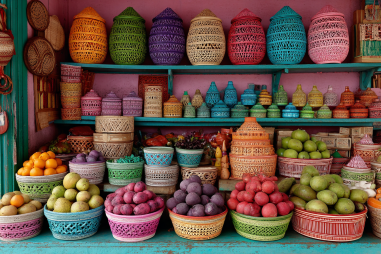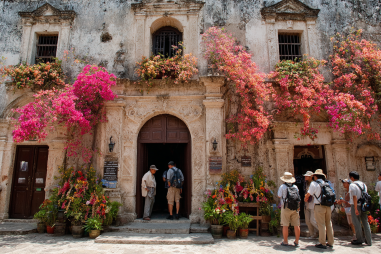Mount Mayon is one of the Philippines’ most iconic natural landmarks, renowned for its perfect cone shape and breathtaking beauty. Whether you’re an avid hiker, a nature lover, or simply a curious traveler, visiting Mount Mayon offers an unforgettable experience. To make sure your trip goes smoothly, it’s important to prepare well and know what to expect. This guide provides essential travel tips to help you enjoy your adventure to this majestic volcano.
Best Time to Visit Mount Mayon
Timing is everything when planning your visit to Mount Mayon. The best time to explore the region is during the dry season, which runs from November to May. During these months, the weather is generally sunny and less humid, making it ideal for hiking, sightseeing, and photography. The months of February to April are especially popular due to the clear skies and comfortable temperatures.
Avoid the rainy season from June to October, as heavy rains can cause landslides and slippery trails, posing safety risks. Additionally, Mayon is an active volcano, so checking for any volcanic activity updates is crucial. The Philippine Institute of Volcanology and Seismology (PHIVOLCS) regularly releases advisories, and it’s wise to follow local government warnings before and during your trip.
Preparing Your Itinerary
Planning your itinerary ahead will enhance your Mount Mayon experience. Start by deciding the key activities you want to include, such as hiking, visiting the Cagsawa Ruins, or exploring nearby towns like Legazpi City.
Consider allocating at least two to three days for your trip. One day can be dedicated to trekking the trails near the volcano’s base, while another day might be spent exploring cultural spots or enjoying local cuisine. If you’re an experienced trekker, you might want to summit Mayon, but this requires special permits and a guide, so be sure to arrange those in advance.
Don’t forget to incorporate some rest time in your schedule, especially if you plan strenuous hikes. Keep your itinerary flexible enough to allow changes due to weather or volcanic activity updates.
Packing Essentials
What you pack can make or break your adventure. Here’s a list of essentials to bring for a trip to Mount Mayon:
- Comfortable Hiking Shoes: Sturdy, non-slip shoes are a must for navigating rocky or uneven terrain.
- Lightweight Clothing: Breathable clothes, hats, and sunglasses will keep you cool under the sun.
- Rain Gear: A waterproof jacket or poncho is valuable, especially if you’re visiting during the tail end of the rainy season.
- Sun Protection: Sunscreen with a high SPF is essential to protect your skin, alongside a wide-brimmed hat.
- Water and Snacks: Carry enough water (at least 2 liters) to stay hydrated, plus energy-boosting snacks.
- Camera or Smartphone: Capture the stunning views and memorable moments.
- First Aid Kit: Basic supplies like band-aids, antiseptic cream, and any personal medications are handy.
- Travel Documents: Don’t forget your ID, permits (if trekking), and any bookings or reservations.
Health and Safety Tips
Safety should be your priority when exploring an active volcano like Mayon. Here are some guidelines to keep you safe:
- Stay Updated on Volcanic Activity: Always check the latest PHIVOLCS advisories and heed local warnings.
- Hire a Licensed Guide: If hiking, use a certified local guide who knows the trails and emergency protocols.
- Stay on Marked Trails: Avoid wandering into restricted or unsafe areas to prevent accidents.
- Be Aware of Your Physical Limits: If you feel unwell or fatigued, don’t push yourself to continue.
- Practice Proper Hygiene: Carry hand sanitizer and drink only bottled or purified water to avoid illnesses.
Local Customs and Etiquette
Respecting local customs will enrich your travel experience and foster goodwill with the communities around Mount Mayon.
- Respect Sacred Spots: Some areas around the volcano are considered sacred or culturally significant to indigenous communities. Observe any signage and avoid disturbing these places.
- Polite Greetings: Filipino hospitality is renowned; a friendly “Mabuhay” (welcome) or “Salamat” (thank you) goes a long way.
- Dress Modestly: When visiting villages or religious sites, wear conservative clothing to show respect.
- Ask Before Photographing: Always seek permission before taking photos of people, especially in rural communities.
- Dispose of Waste Properly: Help keep the environment clean by using designated trash bins or bringing your garbage with you.
Transportation Options and Accessibility
Getting to Mount Mayon is relatively straightforward, with various transportation options depending on your starting point.
From Manila: Most visitors fly into Legazpi City Airport, which is about 15 kilometers from Mount Mayon. Regular flights are available from Manila, Cebu, and other major cities.
By Land: You can take long-distance buses from Manila or nearby provinces to Legazpi City. From there, local jeepneys, tricycles, or taxi services can take you closer to the volcano.
Local Transport: Jeepneys and tricycles are affordable and common for short distances, but if you want more comfort or plan to visit multiple sites, renting a car or booking a guided tour might be more convenient.
Accommodation Recommendations
Legazpi City is the main hub for accommodations near Mount Mayon, offering a range of options for different budgets and preferences.
- Budget Travelers: Hostels and guesthouses in Legazpi provide affordable stays with basic amenities.
- Mid-Range Hotels: Several hotels offer comfortable rooms, often with great views of the volcano, such as the Avenue Plaza Hotel or Hotel St. Ellis.
- Luxury Resorts: For a more lavish experience, consider resorts like Misibis Bay or The Oriental Legazpi, which feature upscale amenities and stunning surroundings.
- Homestays and Eco-Lodges: For a more authentic experience, some local families offer homestays, or you can stay at eco-friendly lodges near nature parks.
Things to Avoid
To ensure your safety and preserve the natural beauty of Mount Mayon, keep these cautions in mind:
- Ignoring Volcanic Warnings: Never attempt to climb or visit restricted areas during times of increased volcanic activity.
- Littering: Avoid leaving trash behind; it harms wildlife and spoils the pristine environment.
- Using Drones Without Permission: Flying drones is regulated, so check local rules to prevent fines or confiscations.
- Disturbing Wildlife or Plants: Refrain from picking flowers or disturbing animals to help conserve the habitat.
- Driving Recklessly: Some roads around Mayon can be narrow and winding, so drive carefully and abide by traffic laws.
Enjoying a Hassle-Free Trip
Visiting Mount Mayon is a truly rewarding experience, offering spectacular views and a chance to connect with nature and local culture. By planning your trip thoughtfully, packing wisely, respecting local customs, and staying safe, you can ensure your adventure is smooth and memorable. Whether you’re gazing at the iconic conical peak, exploring historic ruins, or sampling the local delicacies in nearby towns, the magic of Mayon will surely leave a lasting impression.
So, pack your bags, put safety first, and get ready to explore the beauty and wonder of Mount Mayon—an unforgettable jewel of the Philippines.

